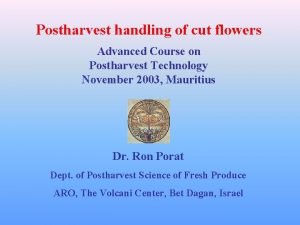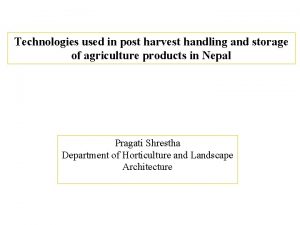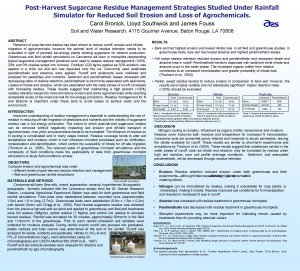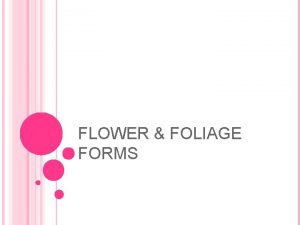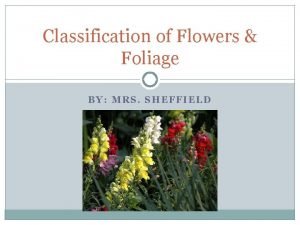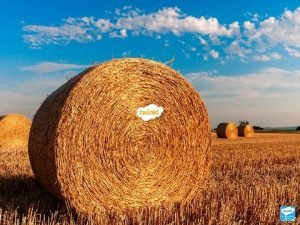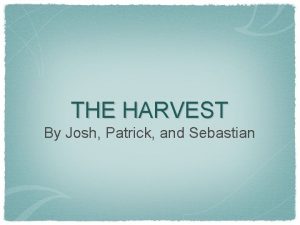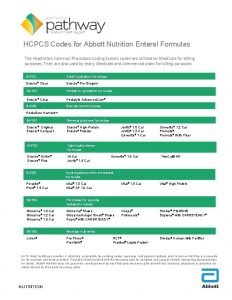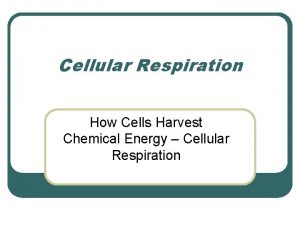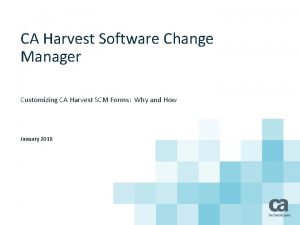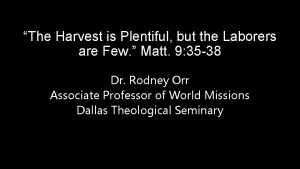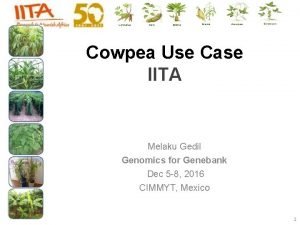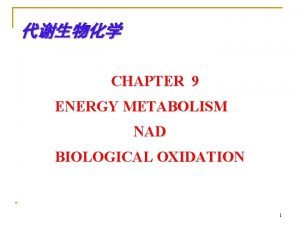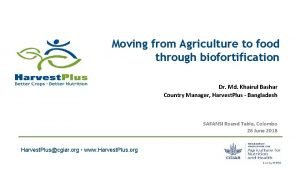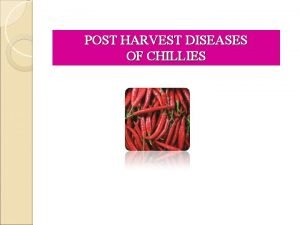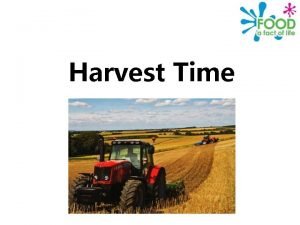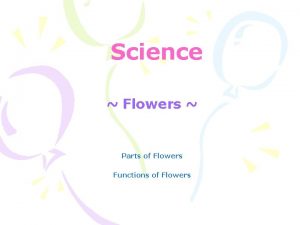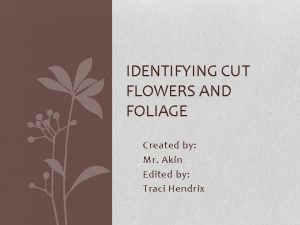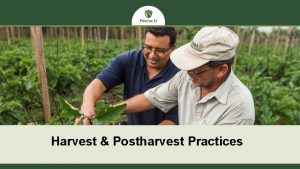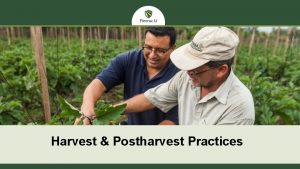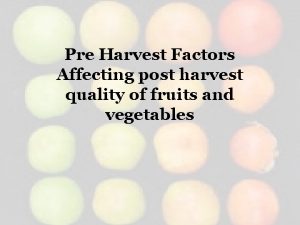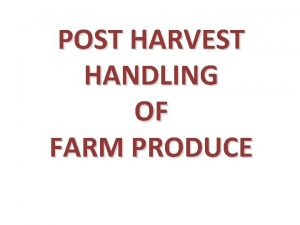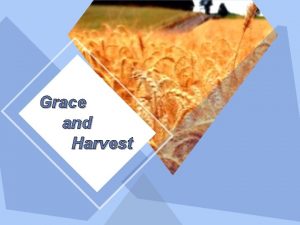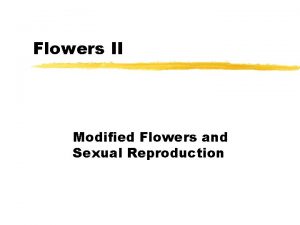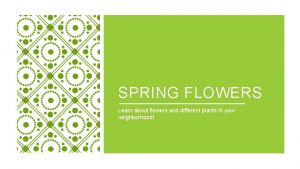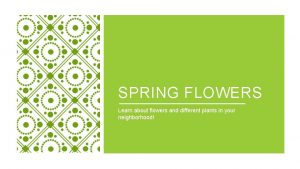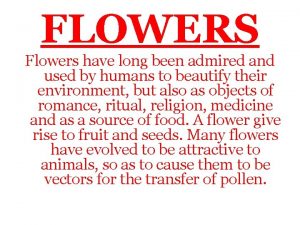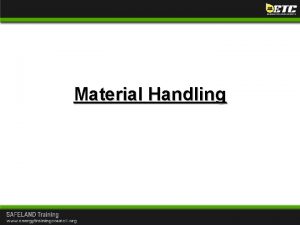Post Harvest Handling of Flowers and Foliage From










































- Slides: 42

Post Harvest Handling of Flowers and Foliage - From the Field to Chelsea

Chelsea 2015

Chelsea 2015

Chelsea 2015

Chelsea 2015

Chelsea 2015

Chelsea 2015

Chelsea 2015

Chelsea 2015

Chelsea 2015

Chelsea 2015

Chelsea 2015

Quality Problems 2012 • Encouragement of the production of local food crops, especially vegetables • Development of irrigation systems

Quality Problems 2012

Quality Problems 2012

Quality Problems 2012

Chelsea 2013

Chelsea 2013

Chelsea ? • Sugar cane farmers rotated pure stand vegetables and root crops with sugar cane • Dr Colin Hudson designed and built planting and harvesting equipment • Medium-sized specialist vegetable farms appeared • Small farmers extended production from root crops to vegetables • Larger acreages grown - onions(250 ac. 1972), tomatoes (387 ac. 1979), carrots (943 ac. 1979)

Chelsea ?

WHAT’S NEEDED FOR A WINNING CHELSEA EXHIBIT • • • Adequate financing An attractive design A talented, hard working team on site Good supply of quality materials Good backup team preparing materials Proper handling, packing and shipping of materials • Timely receipt of materials

Quality Materials with a Long Shelf Life • What goes on in the greenhouse or field can determine the quality and life of cut flowers and foliage • Disease-free plants that were properly irrigated and fertilized will produce flowers that look better and perform better in displays

Quality Materials with Long Shelf Life • Low N and high K prior to harvest increases shelf life of anthuriums • High phosphorus leads to etiolation or stretching and will cause increased internode length and weak blooms • Low magnesium and iron will cause poor chlorotic and pale green foliage which will be susceptible to dieback spots and burnt tip in cool or low humidity conditions

Quality Materials for Long Shelf Life • Plants grown in the right light will ensure foliage and blooms are in the right proportion (not etiolated) and colour of bloom is not bleached. • Blooms and foliage will suffer from sunburn and this often only shows up days later when temperature and humidity of storage and shipping changes.

Quality Materials for Long Shelf Life • Flower/foliage quality can’t improve after harvest • Only the best quality must be picked and at the right time of day. • Conditions which will maintain good quality after harvest must be provided

Harvesting • Correct maturity of material is important • Gingers should be picked when 2/3 of the bracts are open. Trim all or all but the top one to three leaves from the stem in the field or at the packing shed prior to cleaning. • Heliconias will not develop further after harvest so must be picked at the stage at which they are to be used.

Harvesting • Ensure plants have been adequately watered and are turgid before harvesting flowers or foliage • Harvest early morning to reduce water lost to transpiration • Cut stems of gingers 60 – 100 cm. The longer the stems the longer the shelf life • Cut flowers with sharp secateurs to avoid mechanical damage to stems

Harvesting • Pack as soon after harvest as possible as cut flowers and foliage begin to deteriorate as the reserves of moisture and food present at harvest start to run out. • Shade product from direct sunlight between cutting and bringing to packing shed.

Post Harvest Treatment • Place stems into clean buckets of clean, cool water as soon as possible after harvest • Hard water (high p. H) can cause drastic reduction in water movement in stems This problem can be overcome by making the water acid (p. H ~3. 5). Citric acid is commonly used as a safe acidulant. Some people have suggested using

Post Harvest Treatment • Buckets must be cleaned with bleach solution. • OR use Oxidate as it is safer. • Maybe Oxidate can be added to water to reduce the possibility of bacteria build up • Woody stems are more prone to bacterial plugging. Bacteria and other microbes that plug stems may be present even in tap water but are most

Local Transport • Cull any unsuitable stems • Keep stem bases in water during transport from the field to the packing area. • Promptly transport flowers in an air conditioned vehicle to a cool location for packing

Cleaning and Packing • Do this under as cool conditions as possible • Air embolisms result when small air bubbles are drawn into the stem at cutting or during dry storage and block later flow of water up the stem, so that the flower wilts. • Remove embolisms by re-cutting stem, at an angle, while the stem remains under water.

Cleaning and Preparation • Treat material gently during cleaning and preparation to avoid mechanical damage which will show up later in the journey. Wounded material will also produce ethylene gas which can cause leaf drop in foliage of some plants

Cleaning and Preparation • In the field, red ginger is often heavily infested with ants, aphids, soft scales, and mealybugs. If left unchecked, pest buildup can make postharvest disinfestation • time-consuming and difficult. • A combination of pest management in the field and treatment after harvest is recommended

Cleaning and Preparation • Dip material in a dilute solution of Malathion to control any insect pests that may be present • Rinse in clean water • Allow material to air dry (upside down) before packing as moisture may lead to blackening of flowers like gingers.

Packing • Long ventilated customized cardboard boxes are recommended • Flowers are wrapped in shredded paper to cushion them from injury during any shifting, and laid with the heads of alternate layers at alternating ends of boxes • Sheets of paper may be placed between layers for insulation against temperature changes and to absorb

Packing • Too tight packing of flowers/foliage must be avoided. • The heads of the flowers should be placed 6 to 10 cm (2. 4 to 4 in) from the • end of the box to allow effective precooling and to eliminate the danger of petal bruising should the contents of the box shift. •

Air Transport Temperatures • Species that grow naturally in tropical climates need storage temperatures (minimum 10°C) but preferably 15 to 17 deg C to avoid chilling injury which results in greyish or bluish blooms in gingers. • It is recommended to inform flight crew that there are ornamentals on board, as they can usually control the

Air Transport Temperatures • Fluctuating temperatures can lead to poor condition on arrival , even though they may have been in a top-quality condition when they were packed. • Tropicals should be kept away from the direct blast of cold air during shipment. • Small temperature loggers may help to determine temperatures during shipment.

Arrival in UK • Every effort must be made to clear the shipment as promptly as possible to ensure that it is not exposed to too low temperatures • Upon arrival the basal 2– 3 inches of stems should be cut off and the stems placed in warm water • A holding solution of 2% sucrose (w/v) is recommended. Sugar will extend shelf life by at least a week.

Rehydration of Foliage • Rehydration of foliage essential • Possibility that water used to submerge too cold. Some foliage can’t take this change - especially some Aralia and Asparagus- so the shock causes leaf abortion or irreparable dehydration. • Maybe submerged too long • A lot of foliage lost each year • Needs to be discussed firmly and agreement reached on correct

Thank You!
 Post harvest handling of cut flowers and greens
Post harvest handling of cut flowers and greens Post harvest management definition
Post harvest management definition Post harvest management of sugarcane
Post harvest management of sugarcane 3 factors of 16
3 factors of 16 Form foliage
Form foliage Foliage classification
Foliage classification Egyptian period floral arrangements
Egyptian period floral arrangements Fall foliage in louisiana
Fall foliage in louisiana Used so often as to lack freshness or originality
Used so often as to lack freshness or originality Foliage penetration
Foliage penetration Penetration camp
Penetration camp Visual indices of maturity
Visual indices of maturity When is harvest
When is harvest The harvest short story summary
The harvest short story summary Pediasure cpt code
Pediasure cpt code Props and costumes used in moro-moro
Props and costumes used in moro-moro How cells harvest chemical energy
How cells harvest chemical energy Ca harvest software change manager
Ca harvest software change manager Don't judge each day by the harvest you reap
Don't judge each day by the harvest you reap Supernatural harvest
Supernatural harvest The law of the harvest
The law of the harvest Kingdom harvest alliance
Kingdom harvest alliance First fruit of the harvest
First fruit of the harvest Chapter 6 how cells harvest chemical energy
Chapter 6 how cells harvest chemical energy Ipc personal goals
Ipc personal goals Harvest evangelism
Harvest evangelism The harvest is plentiful but the workers are few
The harvest is plentiful but the workers are few Harvest aspect
Harvest aspect Pray that god will send laborers
Pray that god will send laborers Harvest festival scuola primaria
Harvest festival scuola primaria Ckanext-harvest
Ckanext-harvest When i shut up the heavens
When i shut up the heavens Record peach harvest—price lowest in a decade
Record peach harvest—price lowest in a decade Pasca panen telur
Pasca panen telur Unit 8 country life and city life
Unit 8 country life and city life Haemopro
Haemopro Harvest genomics
Harvest genomics Energy harvest
Energy harvest Who is in this image
Who is in this image Harvest plus
Harvest plus Bountiful harvest poe
Bountiful harvest poe Ni-nta affinity chromatography
Ni-nta affinity chromatography Good harvest
Good harvest
